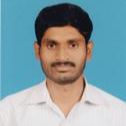
Chandrappa S
Work place: GSSS Institute of Engineering & Technology for Women, Mysore, 570016, India
E-mail: chandrucs21@gmail.com
Website:
Research Interests: Image Compression, Medical Informatics, Medical Image Computing, Image Processing, Image Manipulation
Biography
Chandrappa S received B.E. degree in Computer Science and Engineering from VTU Belagavi in the year 2010 and M.Tech degree in Computer Science and Engineering from VTU Belagavi in the year 2015. He is currently pursuing Ph.D in the field of Medical Image Processing. He has published around 9 papers in reputed Journals and Conferences. His subject of interest includes big data analytics, Medical Image Processing and Computer Networks.
He is currently working as assistant professor in the department of Information Science and Engineering, GSSS Institute of Engineering & Technology for Women, Mysuru. Karnatakata, India. He has 10 years of work experience including research and teaching. He has published the good journals in MECS Journals and received the good citations. He is currently having IEEE membership.
Author Articles
A Novel Approach for Early Detection of Neovascular Glaucoma Using Fractal Geometry
By Chandrappa S Dharmanna L Basavaraj Anami
DOI: https://doi.org/10.5815/ijigsp.2022.01.03, Pub. Date: 8 Feb. 2022
Neovascular glaucoma (NVG) is a human eye disease due to diabetes that leads to permanent vision loss. Early detection and treatment of it prevent further vision loss. Hence the development of an automated system is more essential to help the ophthalmologist in detecting NVG at an earlier stage. In this paper, a novel approach is used for detection of Neovascular glaucoma using fractal geometry concepts. Fractal geometry is a branch of mathematics. It is useful in computing fractal features of irregular, asymmetrical, and complex natural objects. In this work, fractal feature-based Neovascular glaucoma detection from fundus images has been proposed. It utilizes the image adjustment enhancement technique as a preprocessing method to improve the accuracy of NVG detection and the box-counting technique of Fractal geometry to estimate the fractal dimension. The proposed system is tested over MESSIDOR and KMC datasets and yields an average accuracy of 98%.
[...] Read more.Automatic Control of Railway Gates and Destination Notification System using Internet of Things (IoT)
By Chandrappa S Dharmanna Lamani Shubhada Vital Poojary Meghana N U
DOI: https://doi.org/10.5815/ijeme.2017.05.05, Pub. Date: 8 Sep. 2017
The Internet of Things (IoT) is a network of interconnected devices which are outfitted with sensors and Radio-Frequency Identification (RFID) devices. These devices are uniquely addressable and use standard communication protocols like Transmission Control Protocol (TCP), User Datagram Protocol (UDP) and Internet Control Message Protocol (ICMP) in a networking environment. Here devices are communicating with each other without human interaction. The objective of this work is to provide an Automatic Railway Gate Controller, which operates the railway gates without gatekeeper which makes it useful for operation at level crossings. This controller deals with the reduction of time of which the gate is being kept closed and provide the safety to the road users by reducing the accidents that usually occur due to carelessness of road users and the gatekeepers. In addition to this, one more additional module is implemented for the passenger’s convenience. Here, passenger needs to register their phone number via website to get destination arrival notification. This system is cost effective, real time and automatic.
[...] Read more.Design and Development of IoT Device to Measure Quality of Water
By Chandrappa S Dharmanna L Shyama Srivatsa Bhatta U V Sudeeksha Chiploonkar M Suraksha M N Thrupthi S
DOI: https://doi.org/10.5815/ijmecs.2017.04.06, Pub. Date: 8 Apr. 2017
The conventional method of measuring the quality of water is to take the samples manually and send it to laboratory for analysis. This technique is time overwhelming and not economical. Also it is not feasible to take the water sample to the laboratory after every hour for measuring its quality. To overcome from these problems a new system is proposed in this work. This water quality measuring system will measure the essential qualities of water in real time. The proposed system consists of multiple sensors to measure the standard of water, Raspberry Pi 2 and Ethernet Local Area Network (LAN) to send the information to the controlling center. It's a real time system which is able to endlessly measure the standard of water and send the measured values to the controlling center in each predefined time. The system relies on sensors, Raspberry Pi 2 and Internet.
[...] Read more.A Novel Approach for Diagnosis of Glaucoma through Optic Nerve Head (ONH) Analysis using Fractal Dimension Technique
By Dharmanna L Chandrappa S T. C. Manjunath Pavithra G
DOI: https://doi.org/10.5815/ijmecs.2016.01.08, Pub. Date: 8 Jan. 2016
According to the survey of World Health Organization (WHO), the number of people getting affected by glaucoma eye disease in worldwide will be 79.11 million by the year 2020. Glaucoma is a dangerous eye disease, which can lead to permanent vision loss if not provided proper treatment at the right time. Currently ophthalmologists detect the glaucoma disease based on estimation of cup to disk ratio, but this method suffers from accurate segmentation of regions like optic disk and optic cup. However, this introduces errors in the diagnosis. Therefore in this paper, Hausdrop Fractal Dimension (HFD) technique is adopted for identification of the glaucoma eye disease. Here, Optic disk perimeter parameter is used in HFD technique for classification of healthy or glaucomatous retinas. Average fractal dimension is calculated for a set of healthy optic disks and the fractal dimension is found to be 0.998, whereas for glaucomatous optic disks obtained average fractal dimension value 1.342.
[...] Read more.Other Articles
Subscribe to receive issue release notifications and newsletters from MECS Press journals